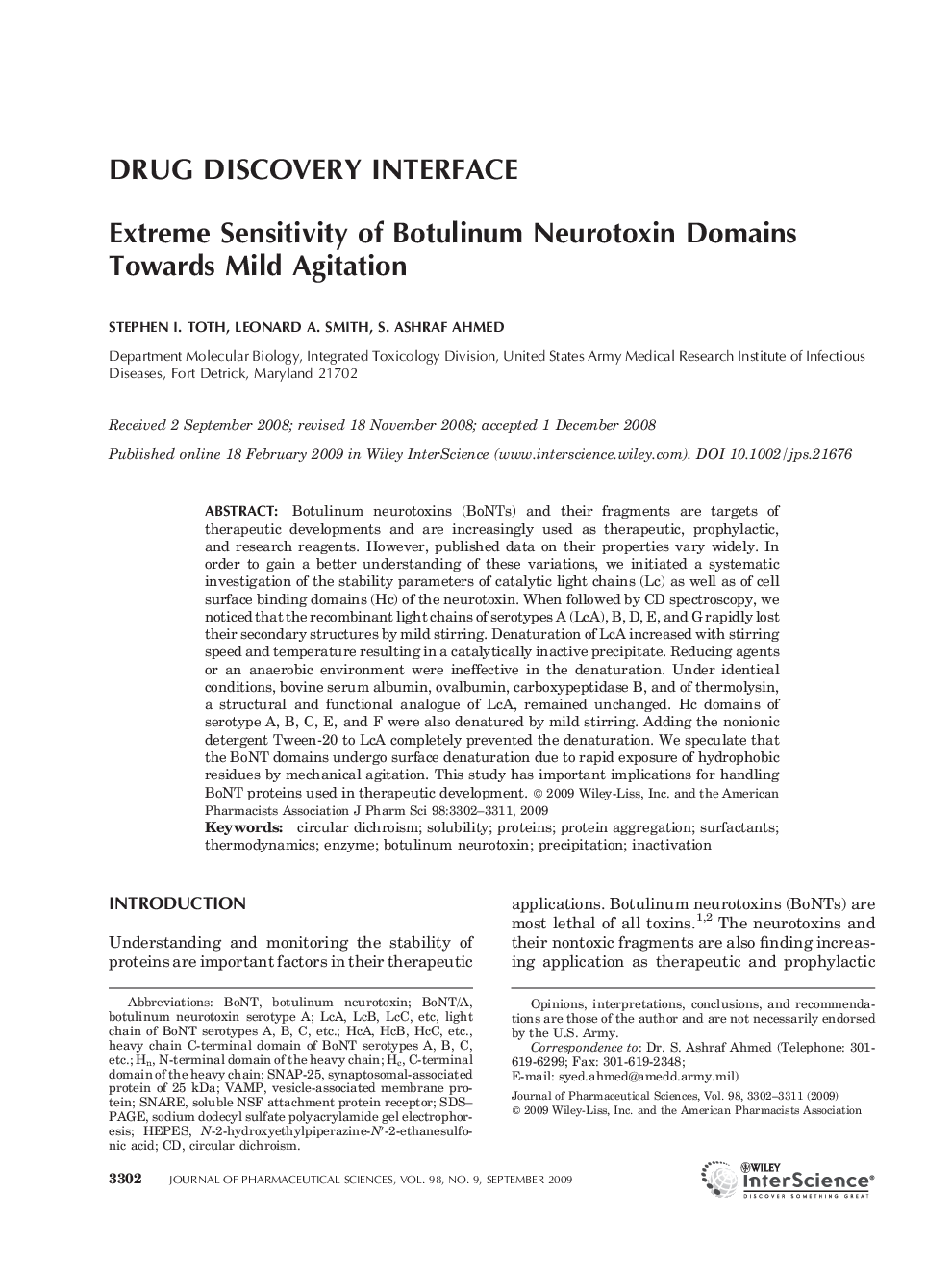| Article ID | Journal | Published Year | Pages | File Type |
|---|---|---|---|---|
| 2486838 | Journal of Pharmaceutical Sciences | 2009 | 10 Pages |
Botulinum neurotoxins (BoNTs) and their fragments are targets of therapeutic developments and are increasingly used as therapeutic, prophylactic, and research reagents. However, published data on their properties vary widely. In order to gain a better understanding of these variations, we initiated a systematic investigation of the stability parameters of catalytic light chains (Lc) as well as of cell surface binding domains (Hc) of the neurotoxin. When followed by CD spectroscopy, we noticed that the recombinant light chains of serotypes A (LcA), B, D, E, and G rapidly lost their secondary structures by mild stirring. Denaturation of LcA increased with stirring speed and temperature resulting in a catalytically inactive precipitate. Reducing agents or an anaerobic environment were ineffective in the denaturation. Under identical conditions, bovine serum albumin, ovalbumin, carboxypeptidase B, and of thermolysin, a structural and functional analogue of LcA, remained unchanged. Hc domains of serotype A, B, C, E, and F were also denatured by mild stirring. Adding the nonionic detergent Tween-20 to LcA completely prevented the denaturation. We speculate that the BoNT domains undergo surface denaturation due to rapid exposure of hydrophobic residues by mechanical agitation. This study has important implications for handling BoNT proteins used in therapeutic development. © 2009 Wiley-Liss, Inc. and the American Pharmacists Association J Pharm Sci 98:3302–3311, 2009
